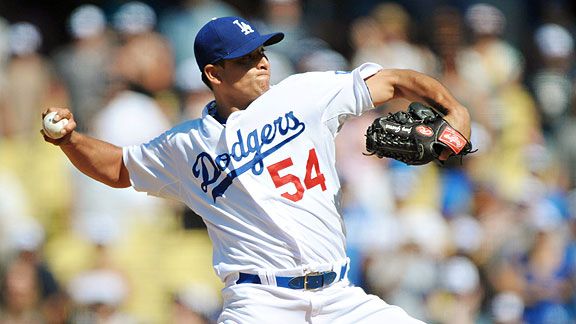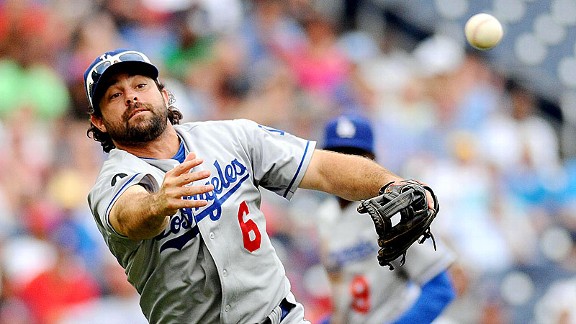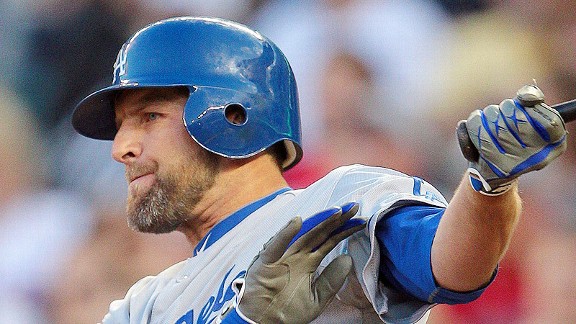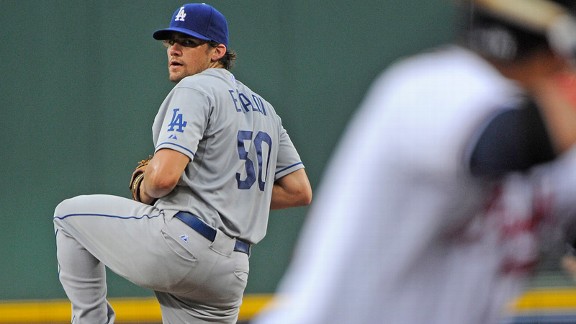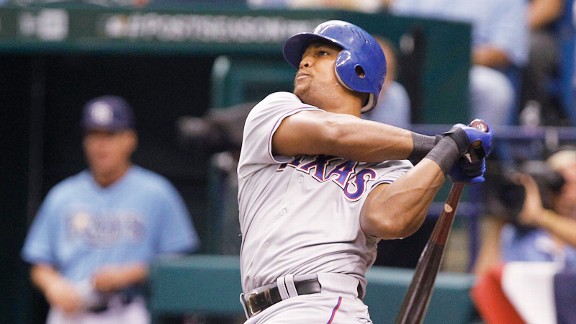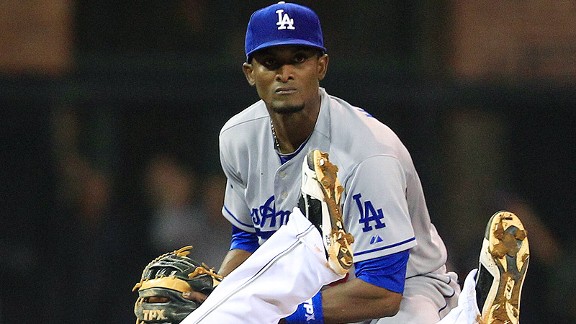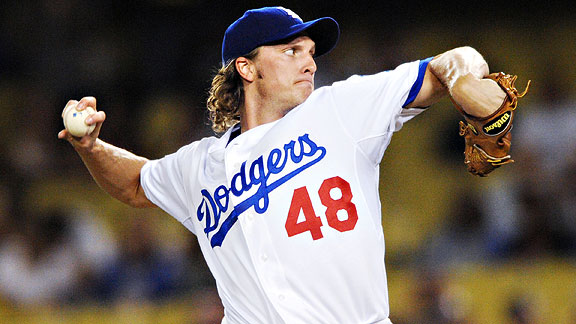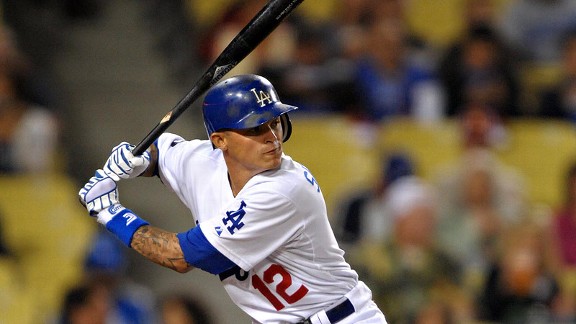Dodger general manager Ned Colletti gave a long interview to Jim Bowden for ESPNLosAngeles.com. Some highlights:
…Matt Kemp is a priority, and I plan on getting with his agent, Dave Stewart, and will work diligently in trying to work out a long-term deal with Matt. There is some urgency because he’ll be a free agent at the end of the 2012 season if they don’t sign him long term now. Clayton Kershaw’s situation is not as urgent because he’s only first-time arbitration eligible and won’t be a free agent until after the 2014 season. That doesn’t mean we won’t have conversations and listen, and if we can make a deal that makes sense, we will be open to it — but not with the same urgency as Kemp.
… We will entertain signing (Andre Ethier) as well, but he’s coming off an injury and a subpar season. … I am not inclined to trade any player that is a key player to our major league club right now, and he fits that category.
… We really need a middle-of-the-lineup impact bat, which would be a very key component to us winning next year. We need to figure out second base. Carroll and Miles are free agents. Right now we have the two young players in Sellers and Ivan DeJesus that we might let compete for that job next year. We need to figure out left field as well, but we’re leaning towards Jerry Sands, especially after the way he finished this season with us. Behind the plate, we’ll probably let Tim Federowicz and A.J. Ellis handle the duties. They are both good catch-and-throw receivers. If Federowicz can hit .240 with some power, he can be an everyday catcher.
… And finally, although we’re pleased with our deep young bullpen, we’d still be open to signing another veteran reliever, but that would be a low priority based on our other team needs.
… We have a need in the middle of our lineup, and if we could do the right deal with a player in terms of duration and money, we would be willing to do it. We have flexibility if we keep catcher, second base, shortstop and left field as non-arbitration eligible players like we have now, then it is definitely possible that we could afford to spend the money on a significant middle-of-the-order bat.
… Kuroda has bought a house in Los Angeles and both of his daughters go to school here. He is an extremely loyal person to both the Dodgers and the city of Los Angeles and really doesn’t want to play anywhere else. We hope he decides to stay here because he’s a very important part of our rotation and clubhouse.
… Our best prospects in our system right now are mostly pitching prospects, led by Zach Lee, who pitched at the Midwest league this past season but has a chance to be special. Allen Webster and Shawn Tolleson are two other top pitching prospects. Tolleson was our minor league pitcher of the year and a close friend of Clayton Kershaw. Steve Ames is another bullpen arm that we could see as early as next season. Chris Lee, our first round pick from Stanford, of course, is also special, and we’re going to try to develop him as a starter.
… We’re a lot closer to winning than people realize. If we had gotten just the typical offensive contributions this year from James Loney, Andre Ethier and Juan Uribe, who knows how many games we could have won. But injuries and subpar seasons are just part of the game. If we can make a few key moves this offseason and solve some of the question marks on this team that we’ve just been talking about, I really believe this club can finish in first in 2012.
There’s more, so be sure to read the whole interview, as well as Tony Jackson’s five key offseason questions and Ramona Shelburne’s own interview with Colletti.
Also, don’t miss the Kamenetzky Brothers’ podcast with “Breaking Bad” star and longtime Dodger fan Bryan Cranston.

